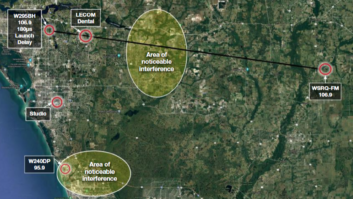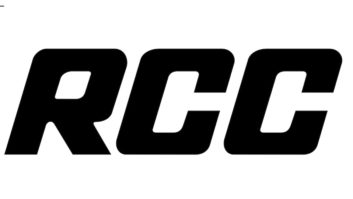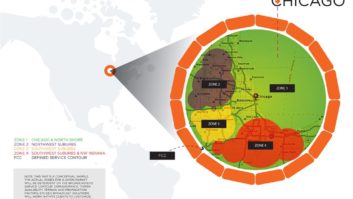Intraplex SynchroCast at Big City Radio
Nov 1, 2000 12:00 PM, BE RADIO STAFF
In the past, competing for listeners and revenue in major markets has demanded a major investment in the purchase of a station with a high-power signal. But, Big City Radio has found another, more affordable, route to compete with major stations in some of the country’s largest markets. Using simulcasting, based on the Intraplex SynchroCast system, Big City has been able to become a major-market player in New York, Los Angeles and Chicago, with another station on the way in Phoenix.
It all began when Big City, (then Odyssey Communications) purchased a single suburban station in Westchester County, outside New York, and was eager to expand into the NY metro market. But, the station required more signal strength to accomplish that and also needed to eliminate interference from competing stations on the same frequency in adjacent areas.
To solve these problems, Big City came up with the idea to buy other lower-power stations with licenses on the same frequency, and then combine them into a major market player through simulcasting.
The company purchased same-frequency stations in New Jersey and Long Island, but still faced technical challenges. Existing equipment didn’t provide enough control over timing to truly synchronize the three stations’ signals and deliver a quality listener experience, in part, because the equipment couldn’t adjust for the delay introduced by telco T1 repeaters and line re-routing.
At an NAB convention, Big City found that Intraplex had developed a timing synchronization system for private two-way radio systems used by police, fire, and 911 operators that ran on a GPS-based clock. The product seemed to provide everything needed to adjust the signal timing dynamically, if the tools could work in a broadcast environment.
Big City laid out its requirements and, within months, Intraplex delivered the first prototype system for testing. With the addition of Harris Digit CD exciters to create a completely digital air chain, Big City was able to control signal timing precisely. The Intraplex SynchroCast delivered better synchronization between the carrier and stereo pilot frequencies, and allowed Big City engineers to control the modulation levels throughout the system to create near-seamless coverage of the area.
SynchroCast sends timing reference and program audio to multiple transmitter sites over T1 lines. GPS receivers, placed at the studio and transmitter sites, provide a timing reference. Program audio and timing signals are compared with the local timing reference, and a precise amount of delay is introduced to correct the timing difference between transmitters. Once the signals are synchronized, the system operates automatically to keep the preset delay constant. SynchroCast is based on the Intraplex STL PLUS, a digital STL system.
New York served as Big City’s test market for the simulcasting concept; Los Angeles went online at about the same time. Today, the company owns simulcast groups in New York, Los Angeles, two groups in Chicago and is in the installation process for a new group in Phoenix.
Use of the Intraplex SynchroCast equipment has allowed Big City to create new major market stations at much lower prices than other groups have paid for full-power stations, and the technology can also be used as an on-channel booster to fill in weak signal areas without interference. For Big City’s L.A. group, for example, the signal-boosting application helps provide an audible signal to almost two million potential listeners in the San Fernando Valley.










